Barks Blog
What Is Enrichment for Animals?
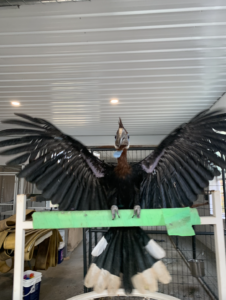
by Diane Garrod
When the term “enrichment” is verbalized, its meaning is often not clearly understood. When I’ve asked clients, “What enrichment does your dog get?” I’ve gotten answers like ball play or a walk, or a long pause of nothing because the client is not sure what enrichment is or means. This got me thinking about the differing categories of enrichment for animals and led me to dig deeper into the science and definition of enrichment. Is it the same for dogs as it is for horses and zoo animals, or does each species have different requirements? Why doesn’t the general public understand how important enrichment is to animals’ lives?
The animal care industry calls animal enrichment “behavioral husbandry.” Merriam-Webster’s Dictionary (2022) defines husbandry as “a branch of agriculture concerned with the production and care of domestic animals.” According to the website Animal Training (n.d.), the definition of behavioral husbandry is
a component of daily animal care focused on how animals interact with their physical and social environment. The goal of behavioral husbandry is to support holistic behavior management. Examples include teaching animals to voluntarily participate in their care and providing opportunities for animals to express species typical behaviors.
Behavioral husbandry is further defined by the animal care industry as “the act of providing an animal in captivity with stimulation that provokes mental and physical stimulation” (Animal Enrichment, n.d.). It is the cornerstone of enrichment, and behavioral husbandry programs should be fully integrated into daily animal management and be both proactive and dynamic in nature. This is a compelling notion for our domestic animals living in our homes. Enrichment isn’t a “sometimes we do it, sometimes we don’t” practice. It should be a carefully planned, fully integrated daily process.
What Defines Enrichment?
There are many published definitions for the term “enrichment.” One is “something an animal is required to perform in a physical interaction in order to receive the benefits of the enrichment” (Animal Enrichment, n.d.). Another is “additions to a dog’s environment and lifestyle, which the dog voluntarily interacts with and, as a result, experiences improved physical and psychological health. Simply adding actions or items to a dog’s or animal’s environment for their benefit” (Barkercise, 2018).
One of my favorite enrichment experts is Lara Joseph. Lara is the owner of the Animal Behavior Center in Lambertville, Michigan, an international educational center focusing on empowering animals and the people that care for them using positive reinforcement and approaches in applied behavior analysis (ABA). Lara is a professional animal behavior consultant and trainer who focuses on working with exotic animals.
I love empowering animals, which is why I train using applied behavior analysis and positive reinforcement. I mention this because my favorite type of enrichment to provide to animals is training, not only because it is mentally and physically enriching to the animal, but because it often involves the animal using one or more of its five senses as well.”
I asked Lara to describe enrichment from her perspective, working daily in a zoo environment:
I’ve always described enrichment as an arousal of the senses, and there are five different senses, so, from my perspective, I observe five different types of enrichment, and many times I use more than one at once. Enrichment can come in the form of visual, olfactory, tactile, audible and oral [stimuli] (personal communication).
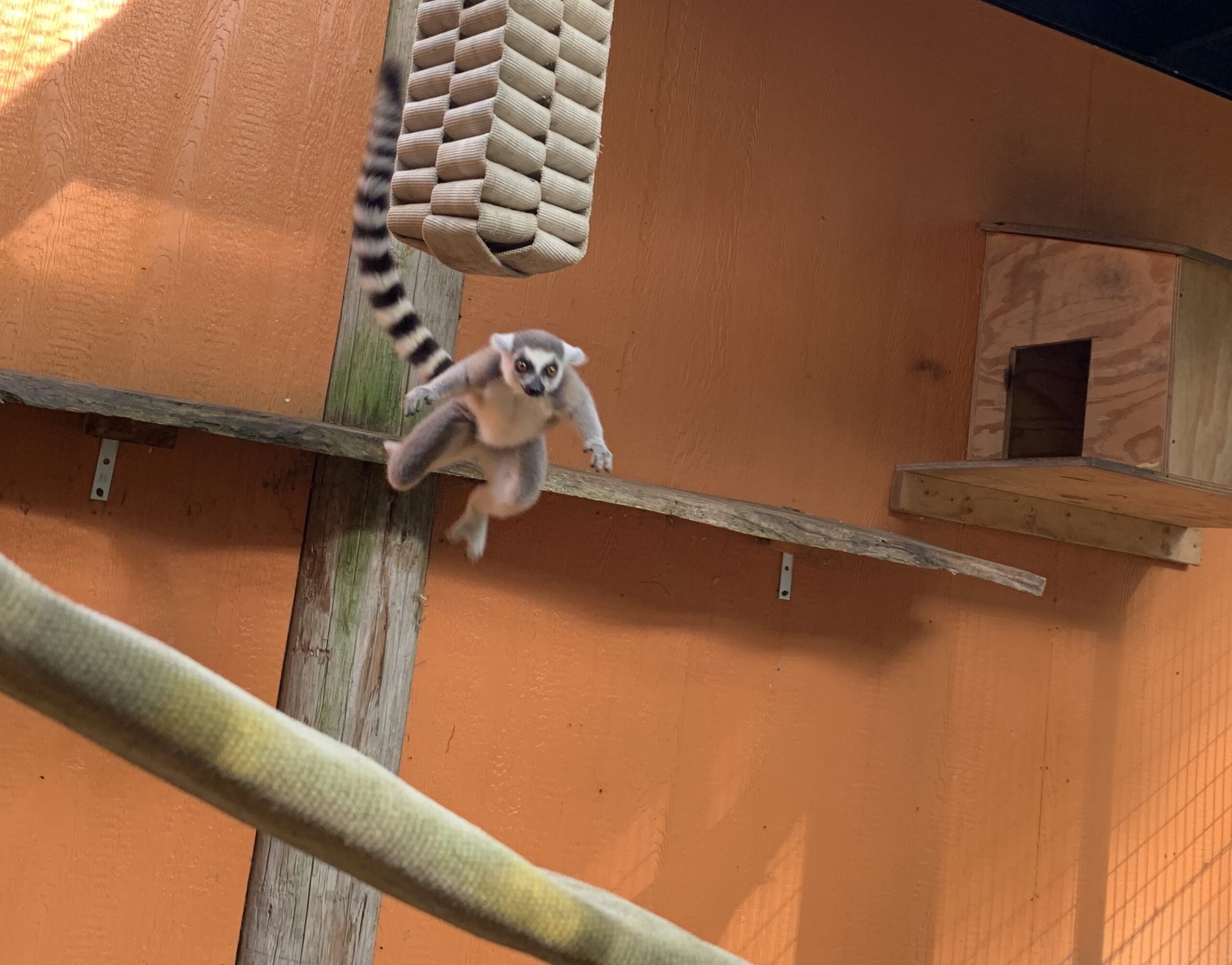
In a zoo setting, it might mean hanging food items in a tree or structure several feet off the ground for a lemur. In a farm setting, it might mean setting out huge rolling hay feeders for bison or other grazing livestock. For a domestic dog, it might mean setting up 20 plastic cups upside down with food hidden under them for a food search, indoors or outdoors.
Why Is Animal Enrichment Important?
Studies show that environmental enrichment reduces stress-related repetitive (stereotypical) behavior in zoo and laboratory animals (Morris et al., 2011). It also has an anti-anxiety and therapeutic effect. Environmental enrichment in companion animals helps prevent unwanted behaviors that canlead to relinquishment to shelters or considerations of euthanasia.
Domestic and captive animals need enrichment to thrive and to prevent behavior issues. Dogs, cats and horses qualify as domestic animals. Captive animals include wild animals in zoos, wildlife sanctuaries, petting zoos, animal shelters and research facilities. Daily enrichment is important for mental and physical fitness, whether an animal is a domestic animal kept in a home or on a farm, or a wild animal in a captive setting.
Enrichment refers to activities an animal would perform in the wild to survive and thrive. An example of a physical behavior that translates to hunting in the wild might be digging for food. Enrichment has many benefits. Using dogs as an example, the benefits include
- Preventing boredom, which often results in issues such as destructive behaviors, nuisance barking or escaping
- Stimulating and assisting in brain growth
- Improving dogs’ problem-solving skills
- Building confidence and social skills
- Enabling dogs to engage in natural and instinctive behaviors
- Allowing for well-adjusted and happy dogs
The consequences of not providing the enrichment an animal needs can lead to depression. Animals need outlets, just as humans do. If enrichment is not provided, the result could be displayed as destructive, nervous, stress-induced behaviors. According to Lara Joseph (personal communication),
The animal that is raised with no or little enrichment is also usually the animal that develops abnormal repetitive behaviors due to lack of stimulated environments. In these cases, something we may consider a small, simple object could be a stressful event to an individual. In these situations, changes in the environment need to be shaped based on the individual’s behavior. I have yet to have one encounter with a stressed animal showing abnormal repetitive behaviors where these behaviors could not be modified through positive reinforcement training. We can shape enrichment through R+ training.
Shaping is a training technique that builds on capturing what an animal offers naturally. It is an advanced method because it requires the trainer to pay attention to the animal’s movements and have excellent timing when rewarding. It is also a higher-level training system because the end result is a complex cue (Miller, 2020).
Categories of Enrichment
As Lara Joseph stated, sensory enrichment encompasses and should satisfy all of the five senses: sight, sound, touch, smell and taste. Enrichment can be divided into two main categories: active and passive. There are several types of enrichment within these two categories. In thinking about enrichment or what enrichment to provide for an individual animal, variety is an essential component, as well as working with all the senses and providing mental and physical opportunities daily.
Active Enrichment
The objective of active enrichment, which includes tactile, olfactory, cognitive and social enrichment, is to allow an animal to perform a variety of behaviors. It should be individualized and satisfy the need for the animal to do things they like to do, as well as what they would offer instinctively.
Tactile Enrichment
According to Merriam-Webster (2022a), tactile is defined as “of or connected with the sense of touch.” Tactile enrichment is important to release stress and change behavior. For example, when tactile enrichment is used, vocal behaviors like over-barking decrease, and focus, attentiveness and responsiveness to the pet parent increase as movement and motion within the environment become less important.
Tactile enrichment is perceptible, tangible and designed to be perceived by touch. One of its purposes is using the tactile sense to convey the sensation of comfort. Dogs can experience this through physical contact with a human, another animal or an object, or the environment itself. Incorporating pleasant tactile experiences can promote behavioral well-being (Shelter Health Pro, 2022). Tactile enrichment also incorporates inanimate objects. Examples include sensory walks on varying surfaces, like sand, stone, metal, cement, grass, snow and water, or interacting with obstacles (e.g., logs, stumps, boards, platforms). It might also consist of objects for the animal to interact with that can satisfy the instinct to dig and forage. For dogs and other canids, a baby pool filled with sand or dirt could be provided with hidden objects, some of which contain food. Treat balls for dogs, feeder containers for zoo or livestock animals, and climbing perches for birds and primates are other examples of tactile enrichment. The possibilities are endless.
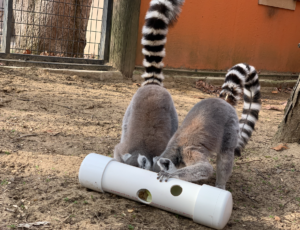
Tactile enrichment also includes adding items to an animal’s physical habitat or environment to make it more dynamic, comfortable or fun. For example, adding perches for flying and climbing animals, places to hide for insects or prey animals, or dirt for animals to dig or roll in. It can also involve allowing animals to interact with food, such as having to open up a container to access food, a food scatter, or placing food on hanging platforms or stations. For domestic animals, tactile enrichment may also be provided in the form of active such, such as massage or Tellington TTouch®.
Olfactory or Scent Enrichment
Since dogs and other canids primarily rely on scent, olfactory enrichment is the easiest form of enrichment to provide them. It can be done on days when more complex cognitive or tactile enrichment is not implemented.
Nose work is a prime example of scent enrichment for dogs. It can include searching for a type of spice, perfumes, bedding from other species such as rats (used in barn hunting) or hair from other species. Olfactory enrichment encourages active hunting for something. Searching for food, a human or another animal all qualify as olfactory enrichment.
Cognitive Enrichment
Cognitive enrichment includes novel (new) objects, used mostly in problem solving, versus tactile enrichment, which includes inanimate objects, and is meant to occupy a domestic or captive animal’s time. According to Moretti and colleagues (2015),
[e]xploration is important for animals to be able to gather information about features of their environment that may directly or indirectly influence survival and reproduction. Closely related to exploration is neophobia, which may reduce exposure to danger, but also constrain explorative behaviour.
Novel enrichment objects could include all types of new problem-solving activities such as color recognition, size recognition and connectivity exercises.
Color recognition—find yellow:
Size recognition—find small:
Connectivity exercise—basket challenge:
A more advanced version of cognitive enrichment was featured in a study by Clark and colleagues (2019), in which
… a modular cuboid puzzle maze [was developed] for the troop of six Western lowland gorillas (Gorilla gorilla gorilla) at Bristol Zoo Gardens, United Kingdom. The gorillas could use their fingers or tools to interact with interconnected modules and remove food rewards. Twelve modules could be interchanged within the frame to create novel iterations with every trial. [The researchers] “evaluated the gorillas’ behavioral responses to the device … as a form of “cognitive enrichment.”
Cognitive enrichment involves problem solving, as it challenges the animal to solve some sort of puzzle or problem to get a food item or a reward of some kind, and includes any activity that requires dogs to think, gives them a job, or uses multiple senses at once. It activates the mind and tires the animal mentally. A favorite book for cognitive enrichment is How Dogs Think, by Immanuel Birmelin, for its daily mental enrichment section in the back. My book, Stress Release: For Dogs, The Canine Emotional Detox, also has a chapter on mentally tiring activities for dogs.
Some cognitive enrichment involves a cue and is reinforced with food items. Cues such as “go find” or “search” or encouragement from the pet parent may be used; however, the goal of cognitive enrichment is to allow the animal to think it through and think on their own, so minimal cueing is advised. Often, we don’t allow our animals to think.
This type of enrichment requires the animal to spend a significant amount of time problem solving, which increases the animal’s thinking power and helps them to make better decisions. Since an animal will remember how they solved a problem, over time they will need more challenging problems to solve and will progress from beginner to intermediate to advanced problems. Often a pet parent will say, “My dog solved that in two minutes.” This simply means the pet parent must continue to put variety into the dog’s cognitive enrichment and provide more advanced problems. Enrichment should always be evolving and progressing.
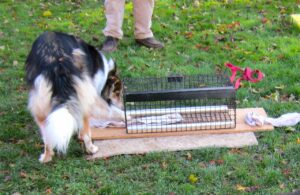
Examples of cognitive enrichment include the following:
- Intelligence puzzles, for example, Nina Ottosson puzzles (https://www.nina-ottosson.com)
- Slow feeders
- Color identification games
- Size recognition games
- Connective exercises (for example, a basket challenge where a treat is placed on a strip of cloth and covered with an overturned basket, requiring the animal to connect that the cloth holds the treat and pulls out the cloth with their mouth or paw to get the reward)
All the teaching we do (e.g., manners, behavior, tricks) is really cognitive enrichment, as it requires the animal to figure out what behavior to perform to get a reward. This also helps improve relationships and develop a communication system in a language understood by the animal. As Lara Joseph explains,
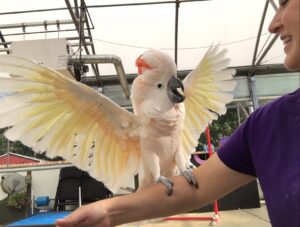
I love empowering animals, which is why I train using applied behavior analysis and positive reinforcement. I mention this because my favorite type of enrichment to provide to animals is training, not only because it is mentally and physically enriching to the animal, but because it often involves the animal using one or more of its five senses as well (personal communication).
Lara continues by saying,
An easy example of using one training session involving the five senses could be the following:
-
- Visual – asking the animal for a recall
- Olfactory – the animal smelling the reinforcer and waiting for the cue to obtain it
- Tactile – the animal giving the recall and targeting by flying to your glove, giving a nose target, sitting on the ground, etc.
- Auditory – hearing the cue and/or bridge during the training session
- Oral – obtaining the food reinforcer (personal communication)
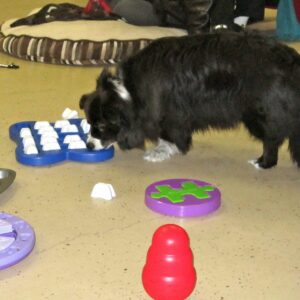
Food-Based Enrichment
Food-based enrichment spans all forms of active enrichment and includes the following:
- Food puzzles
- Snuffle mats
- Hiding treats, indoors or outdoors, under cups or other objects
- Sprinkling food into a rolled-up towel or in cardboard boxes, or stuffing food in a paper roll
- Putting treats in a muffin tin covered by tennis balls
- Food-stuffable toys and treat-dispensing toys
- Serving food out of a slow feeder at mealtime
Social Enrichment
Zoos provide social enrichment by housing nearby or together animals that naturally exist in social groups, for example, flamingoes, most primates and herd animals such as bison. Social enrichment might also include people, stuffed animals and mirrors to simulate social company or a rival.
Social enrichment is provided in two ways: housing within a space that involves pair or group housing and which meets the social needs of the animals through direct contact with conspecifics (members of the same species); or nonsocial housing that provides visual, olfactory, and auditory cues from conspecifics housed in the same room (Stewart, 2017).
Dogs get social enrichment from interacting with housemates and doggy friends, and within a supervised dog play groups. For those who can, visits to dog parks and dog-friendly coffee houses and cafes, and off-leash opportunities at parks or beaches provide social enrichment. Even just going for a walk and seeing other dogs, animals and objects would be considered social enrichment.
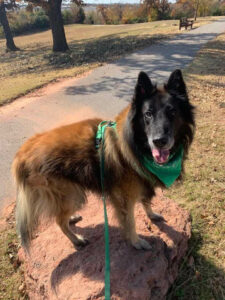
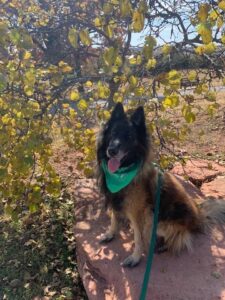
Walks can be divided into three types:
- Awareness walks, during which the dog is allowed to sniff and enjoy the environment with little to no instruction from the pet parent
- Backpack walks, for which the pet parent brings a backpack stuffed with sensory items for the dog to stop and enjoy once or several times on a walk
- Teaching walks, which provide opportunities for learning, behavior work and parkour
Providing proper social enrichment requires making sure that encounters are positive and that the distance, duration and amount of distraction present during social interactions are compatible with what the dog can handle. Introducing a dog to other dogs (which should be done slowly, positively and correctly), individual people and groups of people in different environments also qualify as social enrichment.
Passive Enrichment
Passive enrichment is defined as enrichment that requires no interaction to provide sensory stimulation. It is great for large groups of animals and can easily be used to make an environment more complex and stimulating. Still, it means working with all of the animal’s senses.
Visual Enrichment
Visual enrichment is defined as enrichment that an animal gets from the visual aspects of its environment. Whatever the dog or other animal sees within the environment or happening within the environment is considered visual enrichment.
The most common visual enrichment used in many animal care facilities is changing an animal’s exhibit or environment, but even things like adding pictures and mirrors to an animal’s environment would constitute visual enrichment.
Designing enclosures so that animals can easily be rotated from one to another can be a great way to easily add visual enrichment to their environment, as well as provide a sense of safety.
Auditory Enrichment
Auditory enrichment is enrichment provided using sounds from an animal’s natural environment. In the wild, an animal’s environment is full of many sounds, including rain, birds and other animals. For captive animals, it is important to expose them to a variety of sounds that mimic the sounds in their natural environments. A common form of auditory enrichment for both domestic and captive animals is music and nature sounds.
Exposing dogs to sounds they might experience in their future living environments, especially busy and noisy city environments, is also considered auditory enrichment. Desensitizing dogs and other animals to fireworks, loud trucks, motorcycles and street crews by pairing them with music can help them adjust to a multitude of sounds in active environments. Classical conditioning to sounds by pairing something good with auditory elements that might be more challenging can be very helpful. Calming sounds should always be part of a dog’s enrichment, as it induces deep sleep and helps the animal cope.
Choosing Enrichment Appropriate for Each Animal and Why
The term enrichment is complex, which is likely the reason for those blank stares or inaccurate answers from pet parents. The most basic understanding of enrichment is that it works with all of an animal’s senses, so sensory input is a vital component.
I asked Lara Joseph how she chooses what enrichment is appropriate for each animal she works with and why:
I always observe the animal before I include any type of enrichment. Just because I may need to provide enrichment for a ring-tailed lemur, doesn’t mean I provide the same kind of enrichment that I did with the last lemur I worked with. Each animal is its own individual, and what might be considered enriching and empowering for one could be a feared item or situation for another. Many of the animals I work with come from a wide variety of backgrounds and histories. I observe the animal, note concerns, and jot down goals and ideas. Then I begin implementing them at the animal’s confidence level once I’ve identified positive reinforcers. When I first began working with exotics and zoos, it was common to hear that exotic animals should only be provided natural enrichment. This always bothered me because I always wanted to provide whatever the animal was comfortable with, whether it was natural or not. Most enrichment that would be considered natural are things like browse (tree limbs), trees to climb and fly to, tall grasses to roll in, scents, etc. Yes, that could be enrichment, but you are going to have a bored animal pretty quickly. I’ll provide foraging toys in the forms of pools filled with balls, puzzle feeders, hidden blocks that animals have to try to fly to, swing to, climb to, etc. (personal communication).
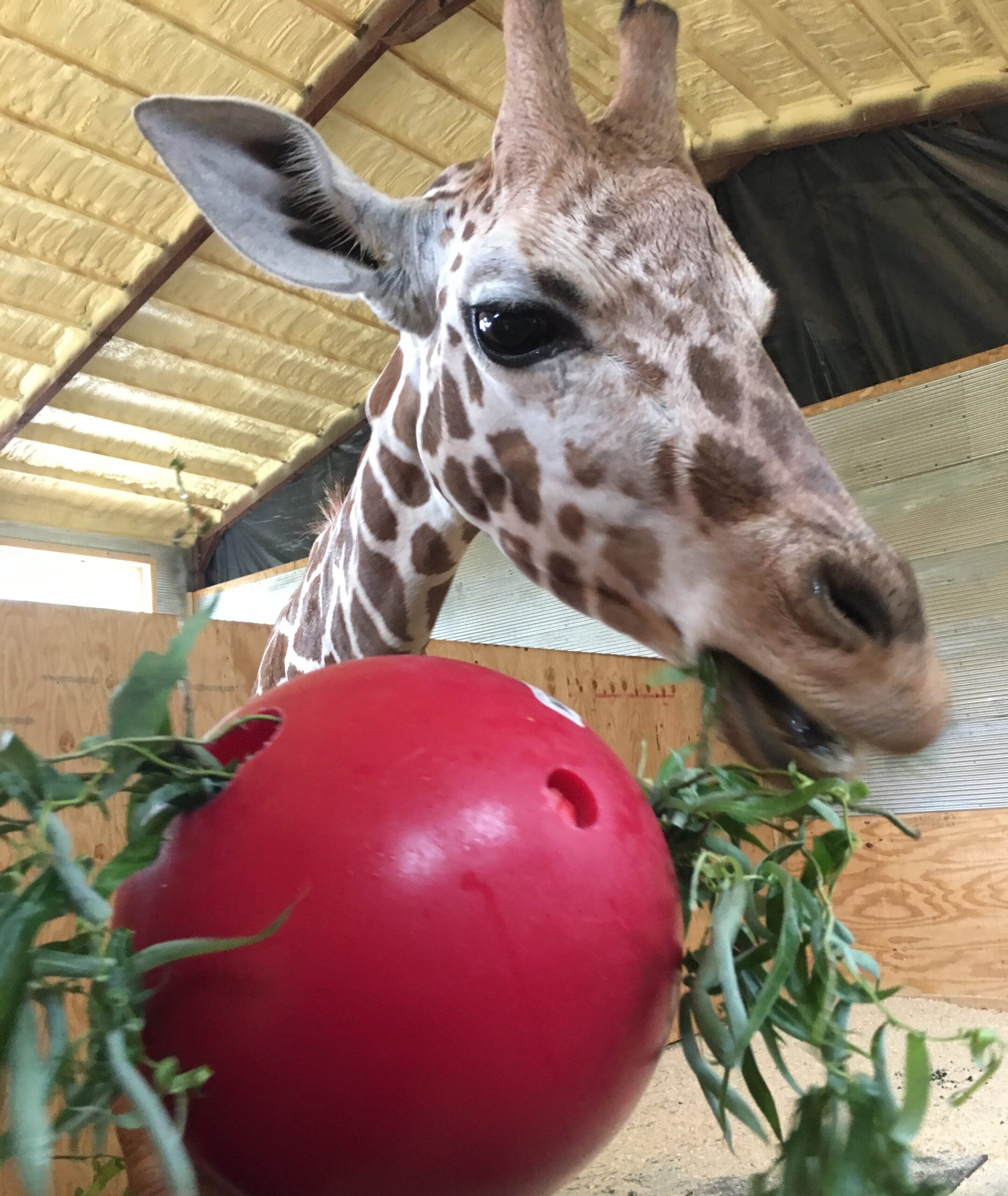
Regular enrichment is essential for a healthy, happy animal. Studies have shown that enrichment for dogs reduces stress, prevents boredom and lessens unwanted behaviors by providing both physical and mental stimulation (Croney et al., n.d.; Hunt et al., 2022). The complexity of enrichment can be underestimated because providing an animal with opportunities to do what it would naturally do in an environment can get old quickly, as Lara pointed out. Keeping a journal on what enrichment is provided to each individual and how it is received, and also writing down new ideas, advanced ideas and ideas for providing variety can help you keep an animal’s mental and physical satisfaction progressing.
A pilot study on environmental enrichment stated the following:
The quality of life for domestic and captive animals can be enhanced and improved by providing additional stimuli and activities, known as environmental enrichment (EE). However, it is important to ensure the enrichment provides benefit to the animal, and as such the behaviour of the animals can be monitored to understand the activities’ impacts. The pilot study was undertaken to evaluate the impact of seven different EE activities on the behaviour of 10 training dogs housed in an office environment during training within an assistance dog charity. Results suggest there is a need to diversify thinking around EE, shifting common thinking of EE as one entity to instead consider EE in different categories and to ensure animals receive a mixture of EE types (Smail et al., 2020).
Environmental enrichment can help to improve relationships, decrease stress, and provide mental and physical stimulation to keep animals healthy and happy.
We could conclude that enrichment is needed daily in all its types and categories for the health and development of an animal. These kinds of interactive activities also fill a void for dogs left alone at home throughout the day or confined to kennels in stressful environments like rescue centers, animal shelters or foster homes these kinds of activities fill a void. See Wells (2004) for a review of enrichment for kenneled dogs.
Dog enrichment isn’t limited to puzzle toys, peanut butter-filled Kongs® or a trip to the dog park. Animal enrichment doesn’t come in one form. Typically, pet parents buy one or two things and think this is enough enrichment, but the reality is that variety and progressive advancement is important. Enrichment needs to change periodically, even daily, offering new sensory opportunities. Animals given many types and forms of enrichment thrive.
Putting it all into a simpler perspective, Kelly (2019) described five elements of canine enrichment:
- Safe environment – freedom from pain and fear
- Natural behaviors – sniffing and chewing
- Companionship and bonding – interaction with family unit
- Non-food enrichment – enjoying an interesting life
- Food enrichment – stuffing toys and hiding food
Everything revolves around the environment. Enrichment is meaningful when the environment is safe. This is a key point when deciding what enrichment to choose and what ideas to extend to the individual.
References
Animal Enrichment. (n.d.). Science of behavior. Retrieved December 13, 2022, from http://www.animalenrichment.org/the-science
Animal Training. (n.d.). Science of behavior. Retrieved December 9, 2022, from http://www.animaltraining.org/science-of-behavior
Barkercise. (2018). The 6 types of enrichment for dogs. Retrieved December 13, 2022, from https://barkercise.com/mental-enrichment-and-mind-stimulation-for-dogs/
Birmelin, I. (2006). How Dogs Think. Metro Books.
Clark, F. E., Gray, S. I., Bennett, P., Mason, L. J., & Burgess, K. V. (2019). High-tech and tactile: Cognitive enrichment for zoo-housed gorillas. Frontiers in Psychology, 10: 1574. https://doi.org/10.3389/fpsyg.2019.01574
Croney, C., Pietraniec, A., & Shreyer, T. (n.d.). Enrichment in kennels. Purdue University. Retrieved December 13, 2022, from https://vet.purdue.edu/discovery/croney/files/documents/enrichment.pdf
Garrod, D. (2021). Stress Release for Dogs: The Canine Emotional Detox. BookBaby.
Hunt, R. L., Whiteside, H., & Prankel, S. (2022). Effects of environmental enrichment on dog behaviour: Pilot study. Animals (Basel), 12(2):141. https://doi.org/10.3390/ani12020141
Kelly, S. (2019). The five elements of canine enrichment. Retrieved December 9, 2022, from https://shaykelly.com/2022/07/18/enrichment-its-not-all-about-food/
Merriam-Webster. (2022). Animal husbandry. In Merriam-Webster’s Dictionary. https://www.merriam-webster.com/dictionary/animal%20husbandry
Merriam-Webster. (2022a). Tactile. In Merriam-Webster’s Dictionary. https://www.merriam-webster.com/dictionary/tactile
Miller, P. (2020). Fun dog training techniques using shaping. Whole Dog Journal. https://www.whole-dog-journal.com/training/fun-dog-training-techniques-using-shaping/
Moretti, L., Hentrup, M., Kotrschal, K., & Range, F. (2015). The influence of relationships on neophobia and exploration in wolves and dogs. Animal Behaviour, 107: 159-173. https://doi.org/10.1016/j.anbehav.2015.06.008
Morris, C. L., Grandin, T., & Irlbeck, N. A. (2011). Companion Animals Symposium: Environmental enrichment for companion, exotic, and laboratory animals. Journal of Animal Science, 89(12): 4227-4238. https://doi.org/10.2527/jas.2010-3722
Shelter Health Pro. (2022). Touch/tactile. Ontario SPCA and Humane Society. Retrieved December 13, 2022 from https://ontariospca.ca/spca-professional/shelter-health-pro/environmental-needs-and-behavioural-health/enrichment-and-socialization-dog/sensory/touch-tactile/
Smail, M. A., Smith, B. L., Nawreen, N., & Herman, J. P. (2020). Differential impact of stress and environmental enrichment on corticolimbic circuits. Pharmacololgy Biochemistry and Behavior, 197: 172993. https://doi.org/10.1016/j.pbb.2020.172993
Stewart, K. L. (2017). Experimental variables. In M. A. Suckow & K. L. Stewart (Eds.), Principles of animal research for graduate and undergraduate students (pp. 75-92). Academic Press. https://doi.org/10.1016/B978-0-12-802151-4.00005-0
Wells, D. L. (2004). A review of environmental enrichment for kennelled dogs, Canis familiaris. Applied Animal Behaviour Science, 85(3-4): 307-317. https://doi.org/10.1016/j.applanim.2003.11.005
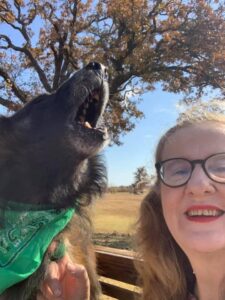 Diane Garrod is a professional canine trainer–accredited (PCT-A), behavior analyst and dog behavior consultant. She owns Canine Transformations Learning in Langley, Washington. She is also a founding member of the Pet Professional Guild and is a Fear Free certified professional and certified Tellington Touch® Practitioner (CA1), and an ATA Certified Treibball Instructor and judge, among many other certifications. She holds a degree in communication and journalism from the University of Wisconsin, and is an author and speaker.
Diane Garrod is a professional canine trainer–accredited (PCT-A), behavior analyst and dog behavior consultant. She owns Canine Transformations Learning in Langley, Washington. She is also a founding member of the Pet Professional Guild and is a Fear Free certified professional and certified Tellington Touch® Practitioner (CA1), and an ATA Certified Treibball Instructor and judge, among many other certifications. She holds a degree in communication and journalism from the University of Wisconsin, and is an author and speaker.
